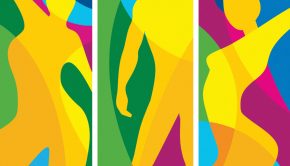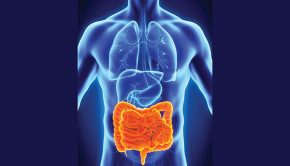Heart of a Woman
The Right Choices Keep It Strong
by Lisa Marshall
Sometime between the salad and themain course at her grandson’s bar mitzvah, Joyce Lenard, then 69, felt a crushing pressure deep within her chest. A tireless go-getter who had worked in Hillary Clinton’s district office when she was a U.S. senator, raised two daughters and recently donated a kidney to one of them, Lenard had spent months painstakingly planning the 100-guest gala, so when the pain came, she ignored it and got on with the party. She even drove herself to her Long Island home that night. “I just assumed I was having indigestion and it would pass,” Lenard recalls.
Hours later, her husband rushed her to the hospital, where she was diagnosed with a rare, often-fatal form of heart attack, takotsubo cardiomyopathy, in which intense stress literally changes the shape of the heart. Thankful to be alive, she has since taken up meditation, cleaned up her diet and now leads a support group for female heart patients of all ages. Like her, many of them never saw it coming.
“Women tend to be the caregivers,” says Lenard. “We take care of our husbands, our families, our friends, our careers, and we often forget about our own health. Then look what happens.” Lenard is among the 44 million U.S. women with cardiovascular disease, an insidious illness that until recently has been erroneously framed as a “man’s disease”. In reality, it is the number one killer of women, responsible for one in three deaths each year, according to the American Heart Association (AHA). By comparison, one in 26 women die of breast cancer. While awareness has risen since 2004, when AHA launched its Go Red for Women campaign, surveys show only 17 percent of women view cardiovascular disease as something that should concern them. It should, experts say, because 80 to 90 percent of cases are avoidable with lifestyle and dietary changes. In some cases, natural remedies can even reverse it. “We have all this sophisticated equipment and all these medications, but when it comes down to it, the vast majority of cardiovascular disease can be prevented,” says integrative cardiologist Christina Adams, M.D., of the Scripps Women’s Heart Center, in La Jolla, California.
Know Risks and Address Them Early
In the late 1990s, researchers discovered women were about as likely as men to be diagnosed with the disease, and far more likely to die from it. “They didn’t have the classic signs and symptoms, so they often went undiagnosed and untreated,” explains Jennifer Mieres, M.D., a cardiology professor at the Zucker School of Medicine at Hofstra/Northwell, in New York.
Along with chest pain, women often suffer fatigue, shortness of breath, indigestion, pain in the neck, back or jaw, nausea or anxiety in the months leading up to a heart attack. In more than half of the cases, according to one recent study in the journal Circulation, doctors fail to recognize these symptoms.
Then there is the “not now” factor. “I used to see women all the time who said, ‘I have had these symptoms for months, but I just didn’t have time to take care of it,’” says Mieres, co-author of Heart Smart for Women: Six S.T.E.P.S. in Six Weeks to Heart-Healthy Living.
Recent research has also shown that women are uniquely vulnerable to developing heart disease in ways that men don’t share. Taking birth control pills (especially while smoking) can boost risk. Complications during pregnancy such as preeclampsia and gestational diabetes can be hard on the heart, increasing vulnerability for years to come. Because estrogen is believed to be cardio-protective, when it wanes during perimenopause and menopause, risk goes up again.
“As soon as we hit menopause, our biological milieu starts to change,” says Mieres, noting that “good” cholesterol tends to decrease and “bad” cholesterol (LDL) and triglycerides tend to increase. Yet, arterial plaque—which can ultimately build up, break loose and cause a heart attack or stroke—starts accumulating as early as age 20, so the earlier women start paying attention, the better.
Food Not Meds
Thirty years after the first cholesterol-lowering medication hit the market, so-called statin drugs have become the largest class of medications in the world, with U.S. sales doubling between 2000 and 2010 to reach $20 billion, according to the U.S. Agency for Healthcare Research and Quality. While drugs can be appropriate for those already diagnosed with heart disease and at high risk of heart attack or stroke, they are not without serious side effects. Statins can cause chronic muscle pain, memory loss and increased blood sugar, while hypertension drugs can precipitate fainting and kidney damage.
For many patients, there’s another way, integrative cardiologists say. Unfortunately, most of the talk about prevention focuses on prescription medications, says Stephen Devries, M.D., executive director of the Chicago-based Gaples Institute for Integrative Cardiology. “What often gets lost in the discussion are the dietary changes, which can be equally important.” Devries recommends a plant-based Mediterranean diet—low in the saturated fat found in beef, processed meats and cheese—and high in leafy greens, whole grains and the “good” fats found in fatty fish, olive oil and avocados. Specific foods have also been shown to lower cholesterol and blood pressure.
Nuts, including walnuts, peanuts and almonds, have been shown to lower LDL. One 2017 study of 77,000 female nurses, published in the Journal of the American College of Cardiology, found those that ate peanuts or tree nuts (including almonds and cashews) two or more times per week had a 19 percent lower risk of developing heart disease. Those that ate walnuts once a week cut their risk by 23 percent.
Dark purple and red fruits contain compounds called anthocyanins that boost production of nitric oxide, and in turn expand blood vessels, improving circulation. Another recent study, published in the journal Circulation, followed 94,000 women for 18 years and found those that ate four servings or more per week of blueberries and strawberries were a third less likely to have a heart attack.
Pomegranates are also key for heart health, with recent research published in the journal Clinical Nutrition showing a daily serving of juice can make platelets less sticky, lower blood pressure and reduce plaque formation.
Dark leafy greens like kale and broccoli— which are rich in vitamin K—play an important role in fostering a healthy heart structure, with each serving per week cutting the risk of heart disease by 23 percent, according to the Gaples Institute.
Nurturing the Emotional Heart
No discussion of heart health would be complete without an emphasis on social and emotional health, a critical risk factor which until recently has been largely absent, says Sandeep Jauhar, M.D., director of the Heart Failure Program at the Long Island Jewish Medical Center, and author of the new book, Heart: A History.
But research shows the emotional heart can break, too, as in Lenard’s case. With as many as 90 percent of incidents occurring in women, the condition that landed her in the emergency room often shows up in patients with no signs of obstructed blood vessels or high cholesterol. Rather, factors like financial worries, work stress or the death of or break-up with a loved one can flood the heart with stress hormones, changing its shape to one that resembles a Japanese pot called a takotsubo and weakening it profoundly. “Remarkably, in many cases, once the emotional state returns to normal, so does the heart,” says Jauhar.
Longer-term, emotional stress has been shown to lead to platelet aggregation, or stickiness in the blood, which can impact blood flow. Also, constant bombardment by stress hormones such as adrenaline and cortisol can damage the inner walls of blood vessels, boosting accumulation of plaque.
To nurture the metaphorical heart, integrative cardiologists recommend taking time to maintain healthy personal relationships and minimize work stress. As well, exercising five to six days per week for at least 30 minutes and practicing activities like mindfulness meditation or yoga have been shown to lower heart rate. A recent study published in the journal Circulation: Cardiovascular Quality and Outcomes looked at 201 people with coronary heart disease. It found those that practiced meditation were 50 percent less likely to die or have a heart attack or stroke in the span of five years.
Finding quiet spaces to retreat to can also be important. A study published in November by researchers at Massachusetts General Hospital, in Boston, found that living and working in chronically noisy environments can boost the risk for heart problems. It is also wise to prioritize sleep (at least seven hours per night), because the lack of it can inflame arteries.
The bottom line is that a holistic approach is best, says Jauhar. “If you want to live a long life, don’t smoke, eat well and exercise, but also pay attention to the quality of your relationships and your ability to withstand stress and transcend distress. Those are also a matter of life and death.”
Lisa Marshall is a freelance health writer in Boulder, CO. Connect at LisaAnnMarshall.com.
mimagephotography/Shutterstock.com
<












